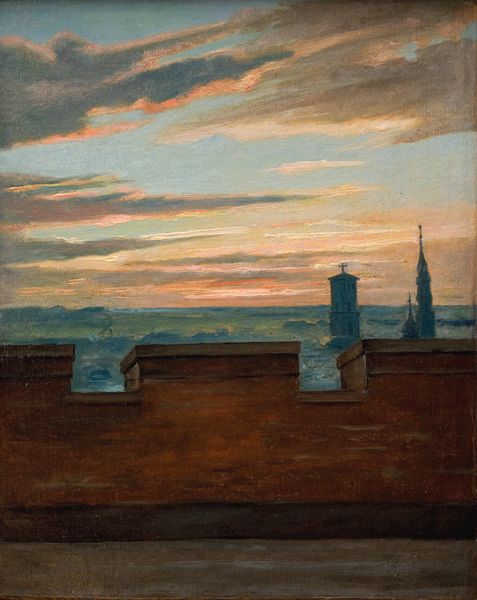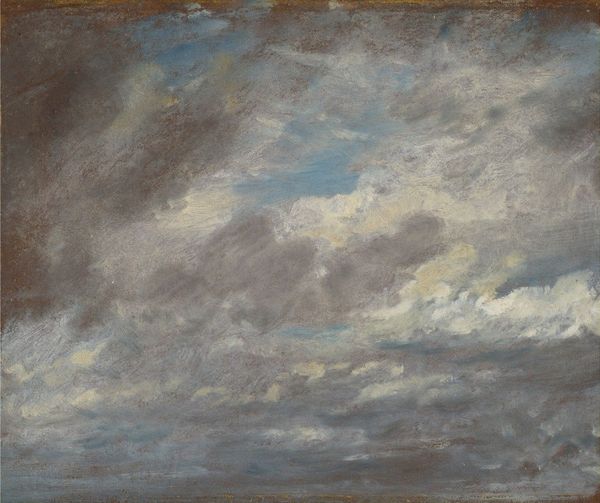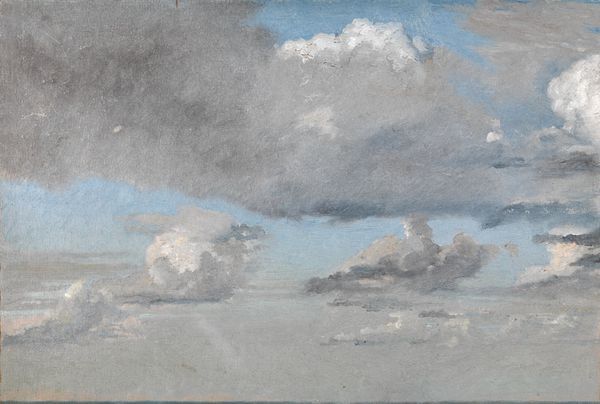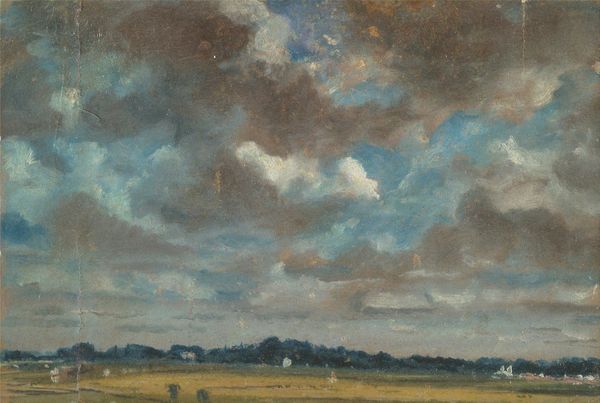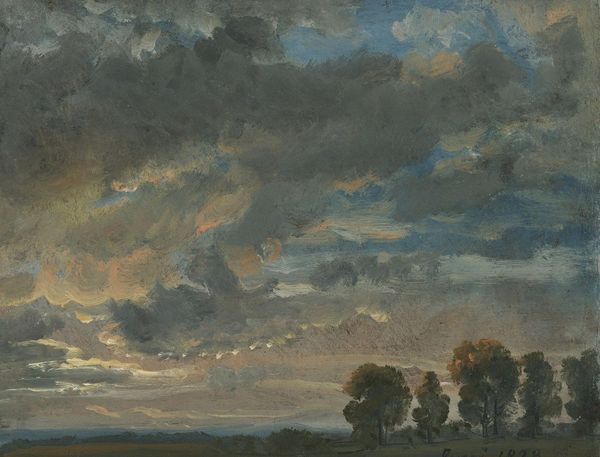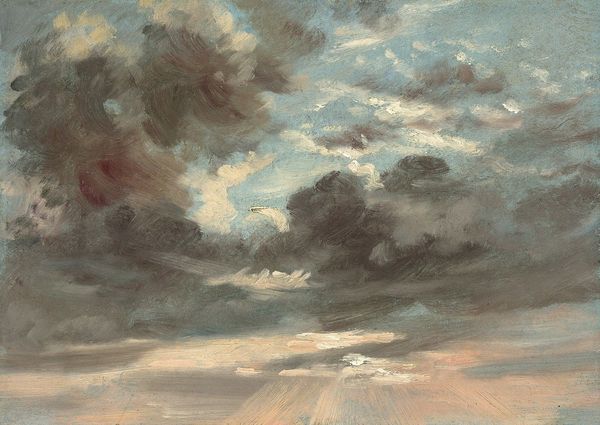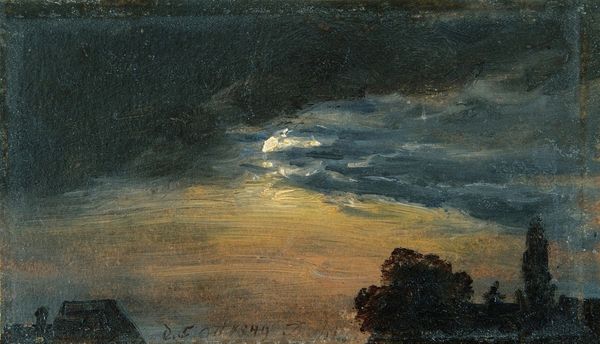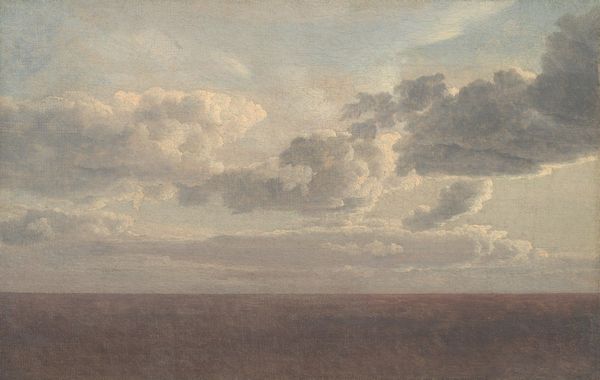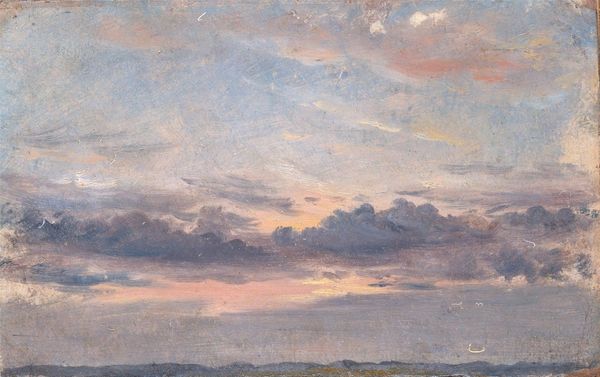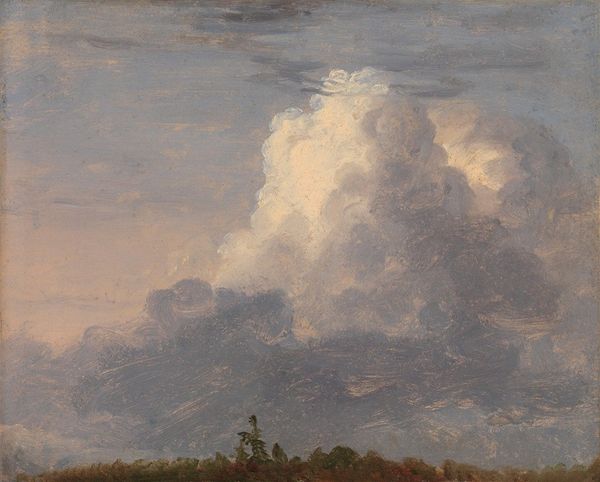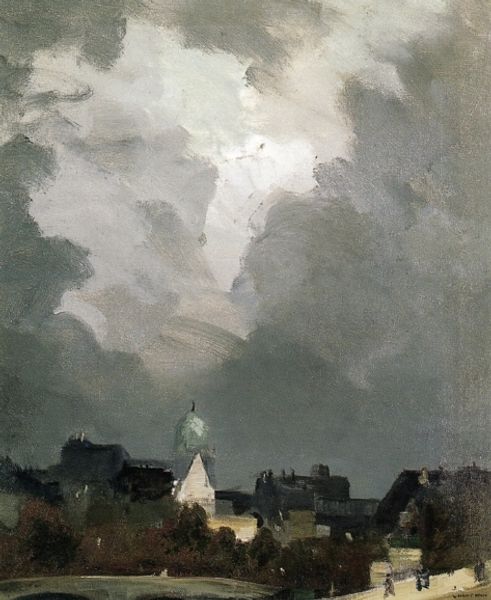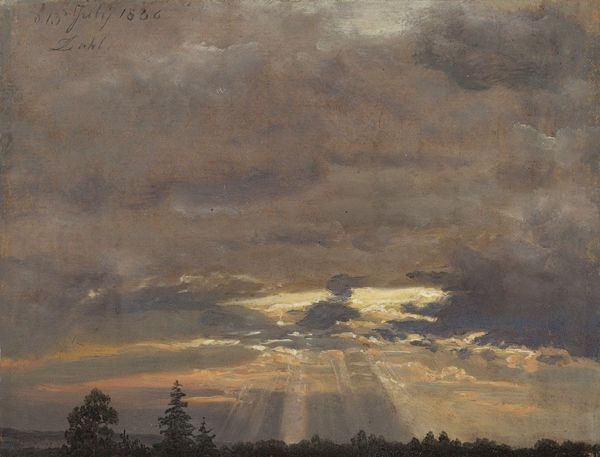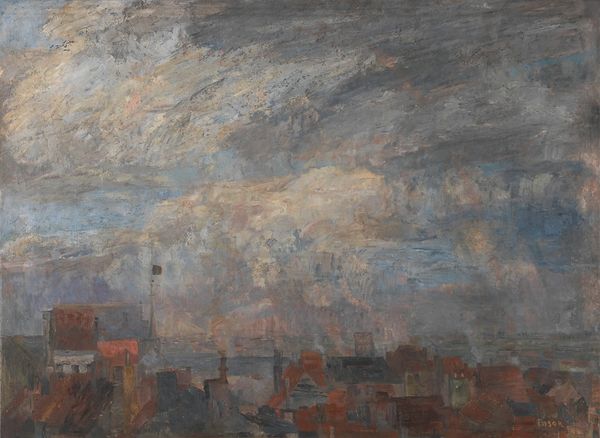
painting, oil-paint
#
painting
#
oil-paint
#
landscape
#
oil painting
#
romanticism
#
cityscape
#
realism
Copyright: Public Domain: Artvee
Curator: Here, we have Johan Christian Dahl’s oil painting, "Stormclouds over the Castle Tower in Dresden," created around 1825. Editor: It’s immediately imposing. The vast sky seems to suffocate the architecture below. The palette is incredibly moody. Curator: Dahl was a pivotal figure in Romanticism. He wasn’t simply painting landscapes; he was investigating nature’s ability to provoke an emotional response. Remember that in early 19th-century Dresden, class divisions were literally built into the landscape, and artistic license could become a form of implicit social critique. Editor: The church spire puncturing the sky… That piercing verticality often represents aspiration, doesn’t it? It feels weakened by the overwhelming atmospheric pressure. What strikes me most is how these billowing, bruised clouds serve almost as a divine canopy – protecting but also threatening the earthly realm below. Curator: The interesting tension arises when we consider his context. Dahl made a name portraying the beauties of nature, later becoming associated with German nationalism. He had connections within the establishment – was he celebrating the permanence of Dresden through architecture, or warning about imminent change and calling for reform? It's unclear. Editor: Indeed. I wonder, did viewers then associate these stormclouds with a general anxiety or, perhaps, divine wrath towards what they perceived as earthly hubris? One has to consider how natural forces always echo power dynamics, whether human or symbolic. Curator: Absolutely. When thinking about landscape art like this, it is helpful to remember to ask “landscape for whom?”. The castle, and indeed the church spire, represents temporal power—that towering reach into the sky asserts dominance in much the same way that colonial powers did, for example. The impending storm could represent a turning point. Editor: It almost embodies collective, perhaps subconscious, anxiety of the era. Dahl doesn't give us a romantic escape; he delivers something much heavier, an internal drama played out on a vast scale. Curator: A drama that still resonates when we think of weather events as emblems of shifting global power today. Editor: Well put. It offers such scope to contemplate, it's less a depiction of Dresden, more a visual allegory, and still manages to be evocative today.
Comments
No comments
Be the first to comment and join the conversation on the ultimate creative platform.
